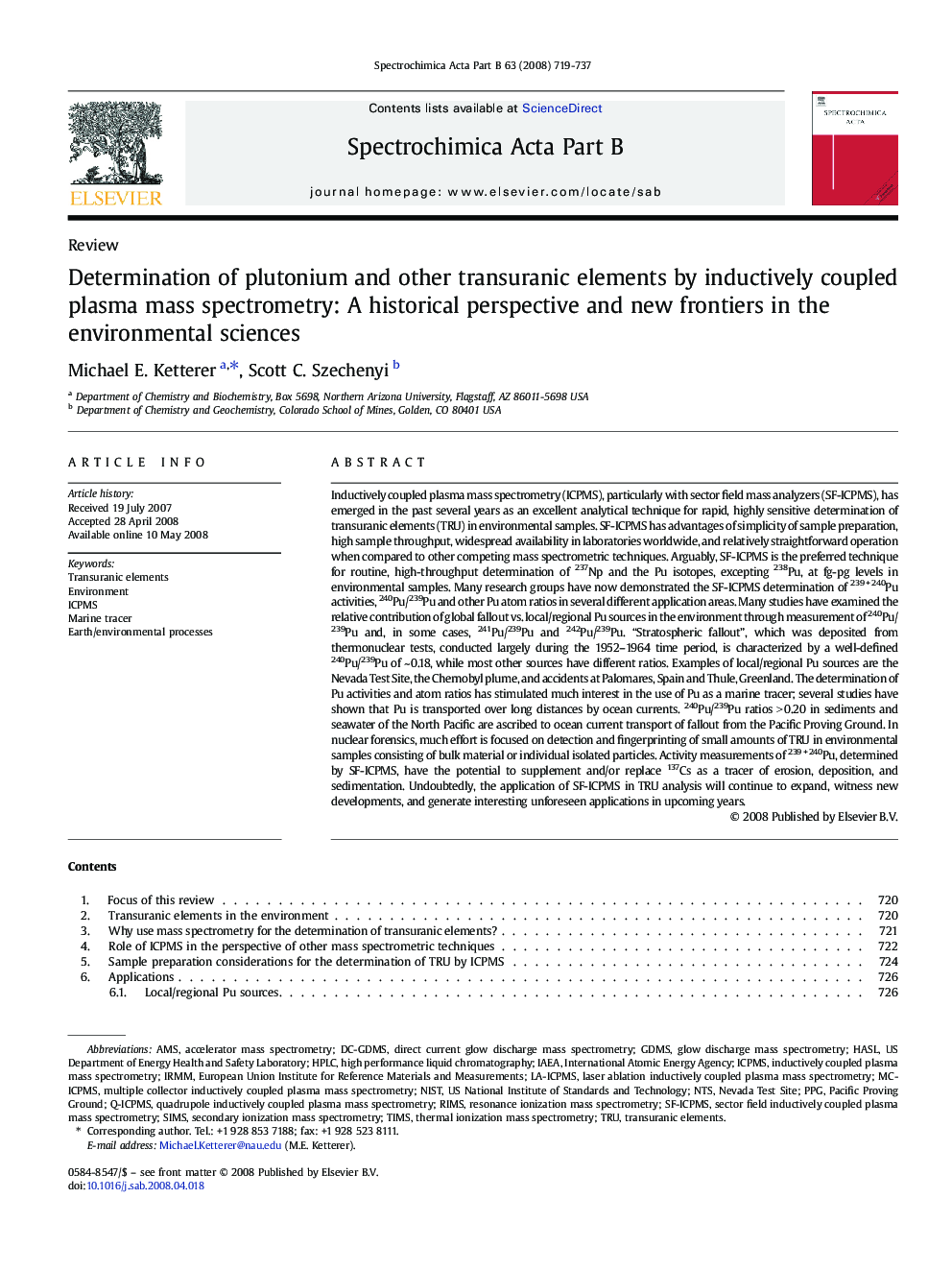| کد مقاله | کد نشریه | سال انتشار | مقاله انگلیسی | نسخه تمام متن |
|---|---|---|---|---|
| 1241062 | 969162 | 2008 | 19 صفحه PDF | دانلود رایگان |

Inductively coupled plasma mass spectrometry (ICPMS), particularly with sector field mass analyzers (SF-ICPMS), has emerged in the past several years as an excellent analytical technique for rapid, highly sensitive determination of transuranic elements (TRU) in environmental samples. SF-ICPMS has advantages of simplicity of sample preparation, high sample throughput, widespread availability in laboratories worldwide, and relatively straightforward operation when compared to other competing mass spectrometric techniques. Arguably, SF-ICPMS is the preferred technique for routine, high-throughput determination of 237Np and the Pu isotopes, excepting 238Pu, at fg-pg levels in environmental samples. Many research groups have now demonstrated the SF-ICPMS determination of 239 + 240Pu activities, 240Pu/239Pu and other Pu atom ratios in several different application areas. Many studies have examined the relative contribution of global fallout vs. local/regional Pu sources in the environment through measurement of 240Pu/239Pu and, in some cases, 241Pu/239Pu and 242Pu/239Pu. “Stratospheric fallout”, which was deposited from thermonuclear tests, conducted largely during the 1952–1964 time period, is characterized by a well-defined 240Pu/239Pu of ~ 0.18, while most other sources have different ratios. Examples of local/regional Pu sources are the Nevada Test Site, the Chernobyl plume, and accidents at Palomares, Spain and Thule, Greenland. The determination of Pu activities and atom ratios has stimulated much interest in the use of Pu as a marine tracer; several studies have shown that Pu is transported over long distances by ocean currents. 240Pu/239Pu ratios > 0.20 in sediments and seawater of the North Pacific are ascribed to ocean current transport of fallout from the Pacific Proving Ground. In nuclear forensics, much effort is focused on detection and fingerprinting of small amounts of TRU in environmental samples consisting of bulk material or individual isolated particles. Activity measurements of 239 + 240Pu, determined by SF-ICPMS, have the potential to supplement and/or replace 137Cs as a tracer of erosion, deposition, and sedimentation. Undoubtedly, the application of SF-ICPMS in TRU analysis will continue to expand, witness new developments, and generate interesting unforeseen applications in upcoming years.
Journal: Spectrochimica Acta Part B: Atomic Spectroscopy - Volume 63, Issue 7, July 2008, Pages 719–737